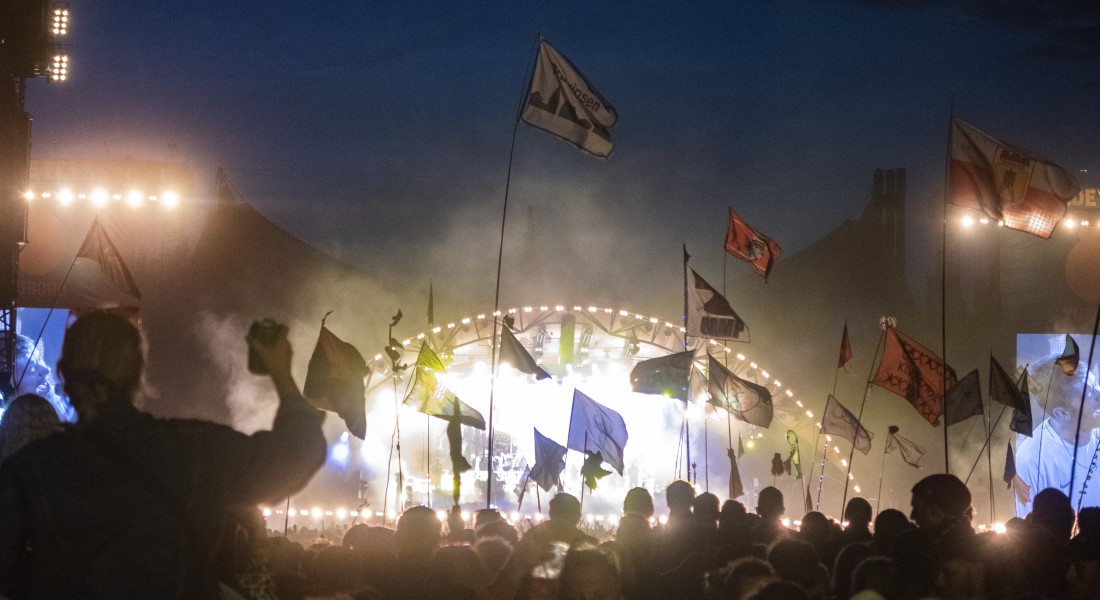Young people find cocaine use increasingly common in party settings
Cocaine use is becoming normalised in parts of party culture, according to a new study of Roskilde festival attendees. It also shows that cannabis is now widely accepted and not even considered a ‘drug’ by many young people.

Cocaine is still perceived by most people as a hard, narcotic drug that is both expensive and risky to use. However, there are signs that the use of the drug in party settings is becoming more normalised: cocaine is not as taboo as it used to be, and the drug is widely used in parts of party culture.
This is the conclusion of a new trend report from the Criminological Observatory at the University of Copenhagen, which analyses young people's attitudes and experiences with illegal drugs at the Roskilde Festival.
We are surprised by the number of young people who either use cocaine themselves or expect to come across cocaine or other hard drugs in a party environment.
The new report is primarily based on interviews with festival attendees and therefore cannot provide precise figures on the prevalence of cocaine in party and festival culture. In addition, other more quantitative studies do not paint a clear picture of the development. However, based on its own data, the report estimates that the experiences of cocaine use point towards a normalisation in parts of the party culture.
"We are surprised by the number of young people who either use cocaine themselves or expect to come across cocaine or other hard drugs in a party environment. Even if they don't use hard drugs, many young people assume that they are likely to come across them when they go out or go to a party," says anthropologist and professor Henrik Vigh, director of the Criminological Observatory and co-author of the report.
Judging by the frequency of experiences with cocaine in the interviews (see figure), only cannabis is more common at the festival. In third place is ecstasy, followed by several less commonly used substances such as hallucinogenic mushrooms, amphetamines, LSD and ketamine.
Figure: Experiences with drugs (share of total)
in interviews with festival attendees (192 experiences in total) broken down by drug categories
A total of 144 interviews and 28 observations are included in the report, which is the first result of a three-year collaboration with Roskilde Festival. By using the country's largest festival for fieldwork, the aim is to gain a better insight into the general use of drugs in the Danish party scene.
"The festival brings together party cultures from all over the country, and with Roskilde Festival's brave and progressive decision to collaborate, we have gained a huge window into young people's social practices in party environments. This means that we can follow trends in drug use over a number of years and see when they change. The field is developing rapidly," says the report's other main author, research assistant Kristiane Fogh.
Cannabis is not perceived as a drug
The aim is not only to assess the prevalence of drugs but also to describe how drugs are used and distributed and the social status of drugs among young people.
Interview from the report
”The man tells us that they have done cocaine and that they bring it from home and share it in the camp. He also offers it to people outside the camp if they start chatting and he thinks they are nice. He says that he always takes cocaine with him in the centre of Copenhagen and that everyone takes cocaine - both boys and girls.”
The report concludes that although cocaine use is less taboo, there is still a significant difference between the use of hard drugs and cannabis, the most used 'soft' drug. In fact, says Kristiane Fogh, many young people do not even perceive cannabis as a real drug.
"It's also noticeable that people who don't use drugs often speak up when they see hard drug use, while it's not common when someone smokes a joint. Cannabis use is much more social and, unlike cocaine, it is not hidden," says Kristiane Fogh.
She stresses that this doesn't necessarily mean that the drug is used recklessly.
"In general, people are very thoughtful when it comes to issues such as the decriminalisation of cannabis and addiction.
The Criminological Observatory hopes that the new report, with its focus on social practices among young people, can be integrated into preventive work and create a more nuanced understanding of the challenges in the area.
As Henrik Vigh puts it:
"We don't want to create moral panic around how many young people use cocaine, for example. For us, it's about shedding light on the social framework and practices surrounding drug use, so that informed decisions can be made in prevention and information work".
Get the full report (in Danish only): Tendensrapport for stofsituationen i dansk festkultur (pdf)
Contact
Henrik Vigh
Professor
Department of Anthropology and Criminological Observatory
E-mail: hv@anthro.ku.dk
Mobile: +45 41 11 14 30
Kristiane Fogh
Research Assistant
Department of Anthropology and Criminological Observatory
E-mail: kf@anthro.ku.dk
Søren Bang
Journalist
Faculty of Social Sciences
E-mail: sba@samf.ku.dk
Mobile: +45 29 21 09 73
